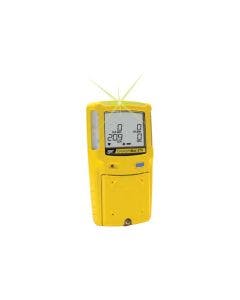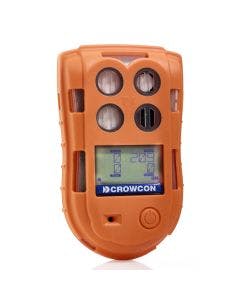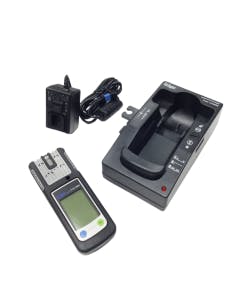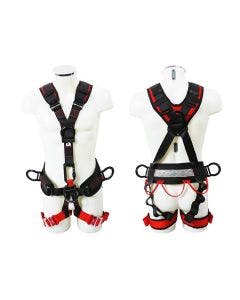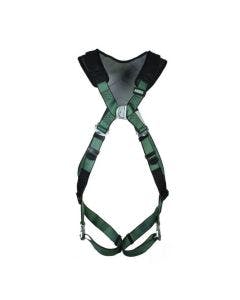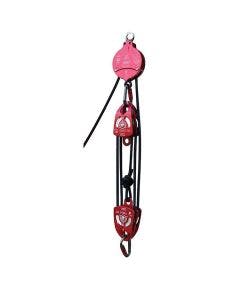Safety Solutions for Offshore Wind Turbines

Safety Solutions for Offshore Wind Turbines
In our last application page, we investigated the hazards and dangers of working in and around wind turbines onshore. In our next edition of the Frontline Safety Green Energy Series, we will delve into the safety complications of working on offshore wind turbines.
Situated either off the coast or at sea, offshore wind farms have provided green energy solutions to the public and are rising in popularity to produce green energy. They have undoubtedly profoundly impacted local economies and coastal communities and created jobs. Although they have many advantages, offshore wind turbines and farms can be hazardous settings to work amongst. In this application page, we will highlight the safety considerations of working within these structures and suggest some safety measures that should be in place to protect those that do.
What gases are found in Offshore Wind Turbines?

The Differences Between Onshore and Offshore Wind Turbines
Offshore wind turbines are generally built in bodies of water, such as seas, lakes and fjords, with significantly higher wind speeds than onshore wind farms. As a result, they typically generate 1WM more than wind farms on land. Because of this, the design of offshore wind turbine structures differs slightly from those on land. Offshore turbines tend to be larger than onshore wind turbines, which are limited to a certain height. This allows them to capture more energy, taking advantage of the more powerful wind speeds.
Legally, you can build more offshore wind turbines on the farm at sea than you can on land as there isn’t the same amount of obstacles like buildings and habitats that are affected by their construction and the noise pollution they cause. As a result, offshore wind farms are often much more extensive than land-based ones.
In more recent years, floating wind farms have risen in popularity. These differ from typical wind farms at sea as they are not fixed to the seabed but instead use anchors to keep them in place while floating. The advantages of floating wind farms mean the turbines can be positioned in much deeper sea areas, creating more room for more giant turbines to produce more power.
Although they have some key differences, offshore wind turbines operate the same as those on land, have the same mechanical principles, and use the same construction materials. However, additional equipment is required during construction, such as platforms, underwater cables, interconnection and other safety equipment. They both feature the same components as each other, including;
- Wind turbine generators (WTG)
- Basements
- Hubs
- Access towers
- Nacelles
- Yaw decks
- Blades

Confined Spaces in Offshore Wind Turbines
Like onshore, offshore wind turbines are highly engineered structures built to withstand harsh environmental conditions. Due to restricted ventilation and limited entry and exit points, various parts are classed as confined spaces within these structures.
As confined spaces are enclosed environments, people entering them risk harmful, toxic gas and potential fires. In wind turbine basements, workers can become oxygen deficient from the lack of oxygen caused by gases heavier than oxygen displacing them. Workers risk losing oxygen and, therefore, consciousness from asphyxiation from toxic and harmful gases, fumes or vapours. Toxic gases like carbon dioxide (co2) can also displace oxygen if emitted from fire suppression systems. These areas also come with the risk of fire hazards risk from electrical or mechanical fires.
Offshore wind turbines have similar confined spaces to those onshore. Still, they can additionally have anchor chambers, hydraulic and cooling system compartments, ballast tanks and auxiliary and storage rooms that workers may need to enter for work and maintenance requirements.
Confined spaces in wind turbines can also be horizontal or vertical, requiring careful consideration for emergency escapes. The basement, yaw section, transformer room and areas near the wind turbine generator often feature horizontal access.
Working at Heights on Offshore Wind Turbines
Offshore wind turbines also have the additional danger of the water surrounding them. Depending on their body of water, seas, waves, and extreme wind can cause added danger to those working in and around them. Limited access, structural complexity, equipment malfunctions and worker fatigue and stress also pose a high risk to workers on offshore wind turbines. In the event of an accident, it is also more challenging to carry out rescue operations; with limited evacuation options, a rescue operation is a lot more difficult for offshore wind farms compared to onshore.
Full-body harnesses should be used at all times on wind turbines to minimise impact in the event of a fall. Wearing a harness also allows a worker to be connected to lanyards (shock absorbing and work positioning) to enable a worker to position themselves safely while working at height on the turbine. Fall arrest systems like self-retracting lifelines are ideal for wind turbines as they pane in and out with the worker when they are in use and will engage in the event of a fall to prevent the worker from falling. Some fall arrest systems also have an additional self-retracting feature to raise and lower workers when required. Edge protection, anchors and rescue equipment are also valuable fall protection equipment that can be utilised on offshore wind turbines.

Escape Equipment for Working on Offshore Wind Turbines
Those working on offshore wind turbines should be fully equipped with training, procedures, ventilation and rescue plans to prevent emergencies. However, sometimes emergencies cannot be prevented, and rescue plans should be in place to avoid serious injuries and fatalities.
As part of a rescue procedure, each worker should be equipped with escape sets or devices to help them escape safely and quickly from danger. An escape provides a worker with an emergency air supply to allow a worker to continue breathing when oxygen may be in depletion. They operate independently and don’t require air sources or power supplies, which is ideal in situations where there may have been a power outage. Although escape sets can help a worker escape safely, there should also be further measures in place to safely evacuate workers from the turbine, like emergency communications and on-site response with boats and helicopters, cranes and rescue baskets.
Offshore wind turbines are highly hazardous when workers lack the correct training and equipment to help keep them safe. Strict safety protocols, comprehensive training, and regular equipment inspections are essential to mitigate these risks of working on offshore wind turbines. Frontline Safety provides safety equipment that can be used for working in and around offshore wind turbines. We recommend the following products to help keep workers safe.
Gas Detection for Wind Turbines
To protect themselves from toxic and harmful gases and to monitor oxygen levels, workers in wind turbines should use a personal gas monitor. Personal gas detectors should be worn continuously while on shift to monitor their breathing air for gases. To enter confined spaces, workers should also use a pumped gas detector for pre-entry checks before entering the confined space to know it's safe. Depending on the specific area, a PID monitor may be needed to detect any levels of benzene and other VOCs.
Fixed gas detection systems can be installed in areas of wind turbines for continuous gas monitoring. By installing a fixed gas detection system in places like basements and access towers, gas levels are monitored while no personnel are around. Fire and flame detectors can also be integrated.
Fall Protection for Wind Turbines
Wind turbines have a high risk of workers falling from height due to the nature of their structures and tall design. Appropriate fall protection equipment should be used consistently by workers to prevent any falls from height, especially if working on the exterior of the turbine around areas like the yaw deck, rotors and the nacelle.
Frontline Safety provides a full range of fall protection equipment from some of the industry's biggest brands, including MSA Safety, Abtech Safety Ltd and Miller by Honeywell, for working at heights and in and around wind turbines. Our range includes karabiners, harnesses, winches and fall arrest devices. We also supply rescue stretchers that can be used both horizontally and vertically, ideal for wind turbine personnel rescue in emergencies.
Escape Devices for Wind Turbines
Emergencies can happen in a matter of seconds and require workers to ensure they can escape quickly and safely; if not, the consequences can be fatal. There should be personal protection equipment and safety measures in place to prevent emergencies in wind turbines. However, emergency escape equipment and devices should be present in the event of one happening.
We provide some of the industry's most trusted escape sets from the most reputable brands, including the Drager CF10 & 15's, MSA S-Cap and Scott Safety Elsa's. We offer escape sets with various escape time durations, filter types and cases.
If you have any questions or want to learn more about safety in the offshore wind energy industry, then our friendly sales team are more than happy to discuss your needs and requirements. Call them on 0141 771 7749, email them at [email protected], or use our live website chat function using the pop-up on the bottom right of the screen.
Products for Detection
Our recommended multi-gas detectors some of which can be used for confined space pre-entry, personal protection, or area monitoring. For confined space pre-entry checks, it is recommended that a pumped monitor is used. The use of a pumped monitor allows for a sampling tube to be fed into the confined space from the outside, confirming it is safe for workers to enter.
Products for Protection
Our recommended personal protection equipment for working on on-shore wind turbines...

